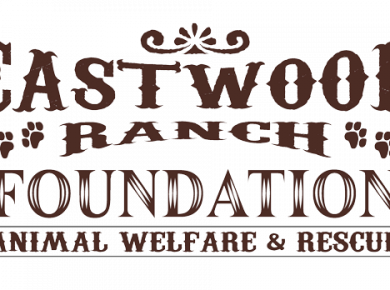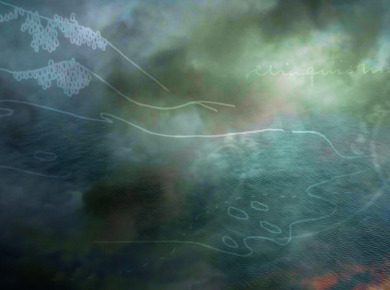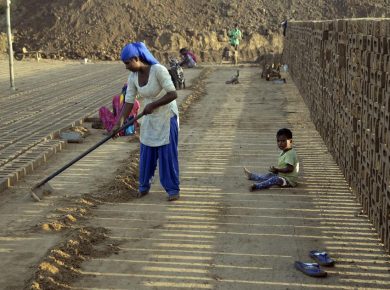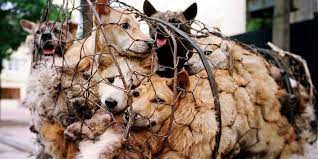Danny Burns is a Professorial Research Fellow at the Institute of Development Studies, and led the Participation, Inclusion and Social Change Cluster from 2010 – 2019. His work focuses on participatory learning for social change with a strong emphasis on systems thinking and complexity. Danny is also Programme Director of CLARISSA (Child Labour: Action-Research-Innovation in South and South-Eastern Asia), a FCDO-funded programme by an IDS-led consortium including Terre des hommes, Child Hope and Consortium for Street Children. The programme looks at the worst forms of child labour amongst children between 8 and 18.
HN: Describe your work.
Danny: As the team leader of IDS’ participation, inclusion and social change team, I developed methodologies for thinking about the participation of the most marginalised: from disabled people in particular communities to people in war zones to women in particular contexts, to slaves and bonded labourers and child labourers and so on.
Typically, participation involves people who are easily accessible, the more educated, etc. But they are often not actually the ones in the most difficult circumstances. The question of how you get marginalised voices into global spaces without making it tokenistic is also problematic. Often, people just pluck people out of the air. But, if you throw a person who is already marginalised into a UN debate, it’s exploitative, in a completely different way. What we’ve been thinking about is how people can generate and analyse their own stories and create stories and video outputs and so on, which can engage with policymakers, but not in stupid tokenistic ways. A two-minute presentation in the UN and everyone claps. It’s completely pointless.
HN: In Bangladesh, you decided to focus on leather, where some of the worst forms of child labour take place – but aren’t covered. Can you talk about your findings?
Danny: Our partners Grambangla did a mapping of the leather supply chain in Dhaka and identified more than 50 processes within that supply chain and discovered that there were ‘worst forms of child labour’ in almost every single one of them, often in large numbers. People know about chemicals, glues for shoes, inhaling substances, cutting machines and so on. But they don’t think about what it’s like for a child to work 12 to 18 hours a day, or working outdoors in 40 degrees, in the heat of the midday sun or carrying heavy loads up many flights of stairs. These are some of the worst forms of child labour.
This is in Hazaribagh, a part of Dhaka characterised by informal settlements and informal work – much of which is in leather. A very high proportion of the work is for the domestic markets. That suggests that quite a lot of the focus on the brands isn’t necessarily the right place to focus.
HN: So how do these sectors link to fashion brands?
Danny: Brands create an image of what is desirable. That then gets replicated in the informal sector for the domestic markets at a fraction of the price. And that creates a space where these kids are being used because they’re really cheap labour. So, while the layers of a brand’s production process closest to the final manufactured article may be regulated, everything before that isn’t. There’s so much emphasis on CSR but so little, comparatively, of the worst abuses that take place in those spaces.
We’re also trying to figure out how to engage with the fact that most of the worst forms of child labour are in small businesses, which may contract through multiple layers into the brand. Individuals informally working for small family businesses carry out critical activities all the way along the chain. By the time the brand sees it, it’s way up the chain.
HN: The programme is quite unique in the sense that you’ve got DFID funding for something pretty radical.
Danny: It’s really rare. The programme has £11 million to run approximately 18 action research processes in each of three countries – alongside a major social protection pilot in Dhaka. It’s a very large scale participatory process and the most of the participants will be children doing jobs which we would characterise as the worst forms of child labour. We want to drive the change through the eyes, the intentions and the actions of the children themselves, as well as the people who work around them.
We will also create participatory processes with employers of children and others. We are using an action research model which generates action from local evidence gathering, This happens at a very local level. It’s not like we’re gathering evidence and then throwing that into a big policy arena. Local people are gathering evidence at a local level to develop ideas and practises for how change could happen. That’s critical. Otherwise, we’ve got nothing really to say. If we can’t say how it’s going to change, then it just becomes a sort of an empty rhetoric.
HN: Tell me more about the action research model.
Danny: There’s two steps. One is a narrative analysis process – collecting 400 stories of child labour in each country. In Bangladesh, we will collect 400 stories from children working in extreme forms of child labour related to leather production processes, and more widely in the neighbourhoods where leather production takes place.
HN: The way you gather the stories sounds crucial to the process.
Danny: There’s a methodology. We teach people to support the telling of stories rather than interviews. If people are interviewed, they’re answering our questions; if they tell the story, they tell us what’s important to them. So we start with what people want to tell and then ask a series of deepening questions, which might say, “can you tell me more about that?”






